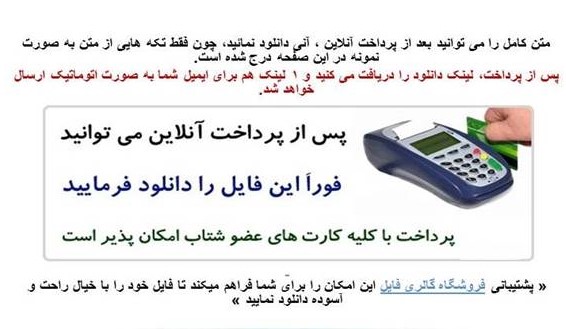- تحقیق درباره شرایط ضمن عقد یا عقد خارج لازم
- تحقیق درباره سبک سازی ساختمان ها
- فایل تحلیل محتوای کتاب علوم دوم ابتدایی
- تحقیق درباره فرآیند جلسه مشاوره و درمان
- تحقیق درباره شهرسازی نوین
- تحقیق درباره علل و عوامل مؤثر در بزهکاری
- تحقیق درباره مجتمع فولاد خراسان درس اقتصاد عمومی 40 ص
- تحقیق درباره قوس
- تحقیق درباره مبانی شبکه 32 ص
- تحقیق درباره ریشه ضرب المثل های ایرانی
لینک دانلود و خرید پایین توضیحات
فرمت فایل word و قابل ویرایش و پرینت
تعداد صفحات: 15
Physical Activity and Bone Measures in Young Children
Received Aug 14, 2000; accepted Nov 20, 2000.
Objectives. Physical activity has a beneficial effect on bone development in circumpubertal children, although its effect on younger children is uncertain. In this cross-sectional study, we examined associations between physical activity and bone measures in 368 preschool children (mean age: 5.2 years, range: 4-6 years).
Design. Physical activity was measured using 4-day accelerometry readings, parental report of children's usual physical activity, and parental report of children's hours of daily television viewing. Total body and site-specific bone mineral content and area bone mineral density (BMD) were measured by dual energy radiograph absorptiometry.
Results. After adjustment for age and body size, accelerometry measures of physical activity and parental report of usual physical activity were consistently and positively associated with bone mineral content and BMD in both boys and girls (r = 0.15-0.28). Television viewing was inversely associated with hip BMD in girls (r = 0.15). The proportion of variance in bone measures explained by physical activity in linear regression models ranged from r2 = 1.5% to 9.0%. In all of these models except total body BMD, at least 1 and often several of the physical activity variables entered as independent predictors. Activity variables most likely to enter the regression models were vigorous physical activity (as determined by accelerometry) and parental ranking of child's usual physical activity.
Conclusions. Findings indicate that there are statistically significant and, perhaps important, associations between physical activity and bone measures during early childhood, well ahead of the onset of peak bone mass. This would suggest that intervention strategies to increase physical activity in young children could contribute to optimal bone development
Effect of physical activity on femoral bone density in men
A G Need, director,a J M Wishart, research assistant,b F Scopacasa, research assistant,b M Horowitz, associate professor,b H A Morris, principal hospital scientist,a B E C Nordin, visiting professor c
a Division of Clinical Biochemistry, Institute of Medical and Veterinary Science, Adelaide, South Australia 5000, b Department of Medicine, Royal Adelaide Hospital, Adelaide, South Australia, c Department of Pathology, University of Adelaide
Correspondence to: Dr Need.
Although most patients with osteoporosis are women, up to one third of hip fractures occur in men. There is little information about which factors influence bone density in men.1 Vigorous activity may lead to bone gain, while immobilisation causes bone loss. A sedentary lifestyle could, therefore, increase the risk of fractures.2 We therefore examined the relation between physical activity and bone density in normal men.
Subjects, methods, and results
One hundred and thirty seven healthy white men, comprising husbands of women attending our osteoporosis clinic, laboratory staff, and hospital workers who were enrolled in a normal bone study, listed their regular physical and sporting activities. Subjects taking drugs or with diseases likely to affect calcium metabolism were excluded. Forty eight were smokers (mean 15 cigarettes/day), and 120 drank alcohol (mean 8.6 g of alcohol/day). The time per week spent on each activity was multiplied by the energy expenditure for that activity and expressed in METs per week (a MET is an arbitrary unit of metabolic activity equivalent to average sitting oxygen consumption); 56 METs per week were subtracted for sleeping time.3
Bone density was measured in the forearm by single photon absorptiometry (Molsgaard Bone Mineral Analyser) and in the spine (L2-L4), femoral neck, Ward's triangle, and trochanter by dual energy x ray absorptiometry (Lunar DPX-L). Results were analysed by Student's t test and linear regression; age correction was done by multiple linear regression with age expressed as a quadratic function. Since bone loss accelerates in men over 50,1 measurements were evaluated separately in men aged 50 and over and in those aged under 50. A P value < 0.05 was considered significant.
The subjects' mean age was 47 (range 20-83), weight 77 kg (range 60-98), height 177 cm (range 157-200), and body mass index 24.7 kg/m2 (range 18.8-32.1). Forearm bone density was lower in those aged 50 and over than in those aged under 50 (472 (SD 77.6) v 522 (56.5) 95% confidence interval for difference: 25.6 to 74.4; P<0.001), but energy expenditure was similar in the two groups (129 (14.7) METs per week in the former and 131 (17.1) in the latter), equivalent to about 2.5 hours' jogging or 5.5 hours' walking. In the whole set activity was related to age-corrected bone density in the femoral neck (r=0.26, P<0.01) but not in the forearm or spine (r=-0.056 and 0.140 respectively). Activity and bone density were not related in men aged 50 and over. In those aged under 50 they were significantly related in the spine, femoral neck, Ward's triangle, and trochanter. These relations were unaffected by adjustment for age (table). Femoral neck bone densities in all subjects who jogged (22), walked regularly (53), or were sedentary (21) were 1.098 (0.121), 0.984 (0.152), and 0.962 (0.120) g/cm2 respectively; the difference between the joggers and sedentary men was significant (0.136; 95% confidence interval: 0.097 to 0.225; P<0.01).
Partial coefficients of correlation (age corrected) of bone density
variables and activity score
-------------------------------------------------------------------
Age < 50 Age >/=50
(n=71) (n=66)
-------------------------------------------------------------------
Site r P value r P value
-------------------------------------------------------------------
Forearm 0.028 0.796 -0.148 0.304
Lumbar 0.245 0.039 0.031 0.929
Femoral neck 0.394 0.001 0.106 0.552
Ward's triangle 0.305 0.010 0.221 0.142
Trochanter 0.257 0.031 0.126 0.378
Comment

تحقیق درمورد ورزش و پوکی استخوان
